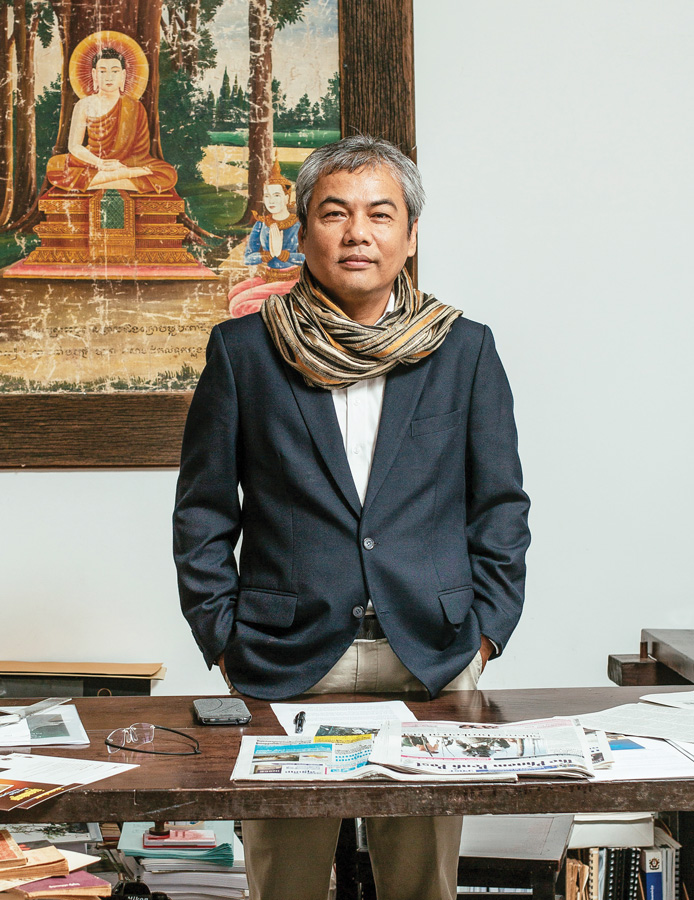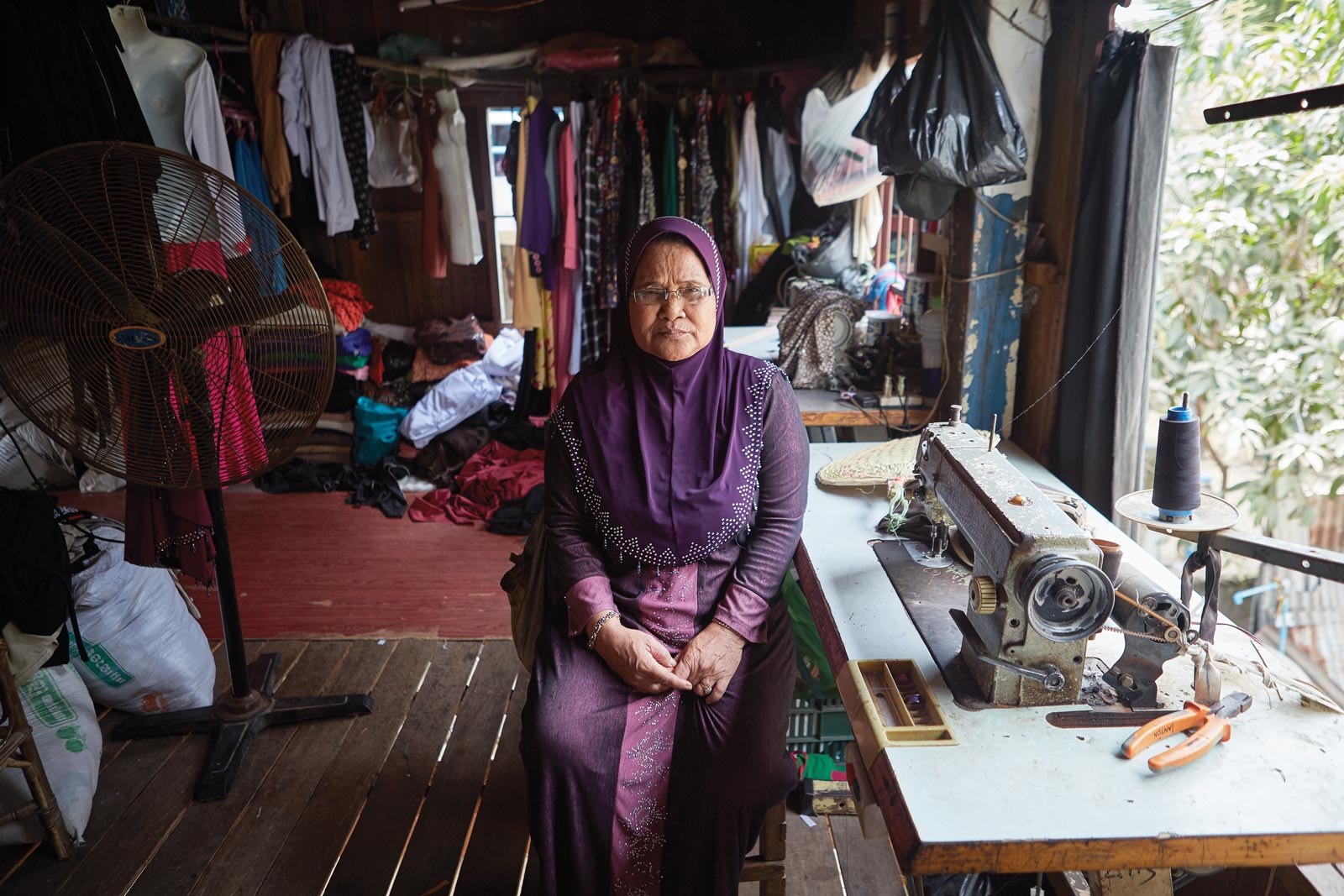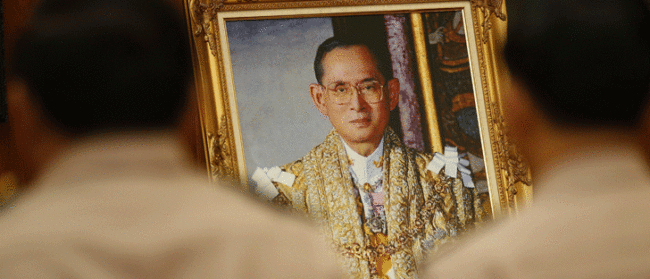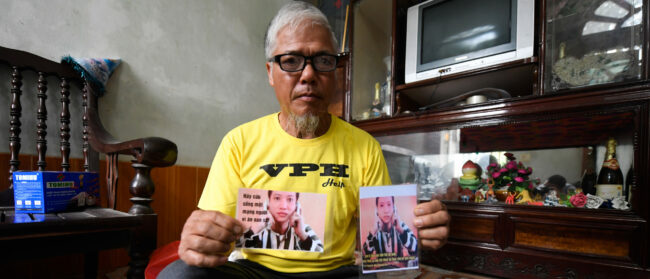“Sometimes, I miss the Khmer Rouge days,” says Youk Chhang, cradling a photograph of a field specked with trees and flowers in his hands. “That is where I lived during those times. People died there. My family died there. But in the mornings, when I went to work, I saw the flowers blossom, and I was so happy. It gave you hope. It meant you didn’t give in to the Khmer Rouge.”

Between April 1975 and January 1979, an estimated 1.5 million Cambodians died of starvation, execution or disease under the Khmer Rouge regime. Chhang’s relatives were among those who perished. As a teenager, he survived the entire four-year period.
“I was skinny like a skeleton with a rash all over my body and with no food, but I never thought of dying. I had hope that I would eat, see my family and have a better life one day,” says Chhang, now the executive director of Documentation Centre of Cambodia (DC-Cam), an NGO that researches and records the Khmer Rouge era. “When you lose hope, you’re weak, you can die. So hope was a form of resistance.”
Chhang pins the photograph back onto the wall, returns to his desk and takes a moment to compose himself. In the ensuing silence, he looks around his office, cluttered with books on shelves and the floor. “A historian can spend his entire career writing books about the Khmer Rouge and not cover everything,” he says, “but the history of resistance has not been covered enough.”
Across the hall in DC-Cam’s Phnom Penh headquarters, Farina So sits in her office, remembering that, as a teenager, she would ask her mother why more people did not fight back against the Khmer Rouge.
“It’s a question that many young people are still asking today, and it bothers a lot of survivors, because many did resist, just not in ways people expect,” says So, who now heads DC-Cam’s Cham Oral History project.
Chanrithy Him was just ten years old when the Khmer Rouge footslogged into Phnom Penh on 17 April 1975. Her family was forcibly ‘evacuated’ to the countryside days later, where she would witness most of their deaths.
Him, who penned a memoir titled When Broken Glass Floats, tells Southeast Asia Globe that many Cambodians fought back against the Khmer Rouge through “emotional resistance”. Her examples include calling loved ones by their names instead of the obligatory ‘comrade’, escaping from labour camps to visit family members and refusing to work by lying to Khmer Rouge cadres about being sick.
“Emotionally resisting the Khmer Rouge meant I recognised evil. So I mentally resisted its forces and became a human recorder,” Him says, evoking the words of Primo Levi, the Italian-Jewish author and Holocaust survivor, for whom resistance was the “want to survive, to tell the story, to bear witness”.
“There would come a day to share my memories, giving voice to children who can’t speak for themselves… to my deceased family members and to those whose remains are in unmarked mass graves scattered throughout Cambodia,” Him adds.
Kup Aishah, who now lives in Kampong Thom province, told Southeast Asia Globe that she wishes she could have physically fought the Khmer Rouge, but that “I couldn’t, because I am a woman. The authority was too absolute and strict.” She adds that she was “more than angry and resistant toward those bloody zealots”.

Memoirs of Cambodian survivors are awash with examples of passive resistance, what political scientist and anthropologist James Scott called “everyday forms of resistance” in Weapons of the Weak. These include poaching, black marketeering, sabotage, slander, desertion and noncompliance.
“Despite the overwhelming terror, people did attempt to resist, some by escaping,” writes Audrey U. Kim in Not Just Victims, a collection of interviews with Cambodian refugees in the US. “Many people felt that because they were going to die anyway, they might as well die while trying to reach freedom.” The UN Refugee Agency estimates that 34,000 Cambodians escaped into Thailand and Vietnam. Countless others died trying.
In Pin Yathay’s memoir, Stay Alive, My Son, he tells the story of a woman forcibly separated from her family who, after being caught having sex with a senior Khmer Rouge cadre, denounced him and two other soldiers. All four were promptly executed. “We looked upon the woman as a true heroine of the passive resistance,” Yathay writes. “She had had her revenge and had struck back for all of us.”
Against the spectre of genocide, Chhang is a firm believer that “emotions were much stronger than weapons… It gave us the strength to live longer, to survive, to not give in and to tell our stories.”
However, according to So, such stories are rarely discerned by historians, who “only look for physical acts of resistance”. For example, David Chandler, an American historian who authored the 1983 classic A History of Cambodia, told Southeast Asia Globe that “there is almost nothing written about resistance”.
A good deal is known, however, about ‘anticipatory rebellions’ – revolts by members of the Khmer Rouge who foresaw internal purges and rebelled against the central command.
In the past 20 years or so, there have also been a number of studies on physical resistance to the regime. In 2006, the historian Margaret Slocomb published a paper on the Chikreng rebellion, which took place in 1977. A number of works have also been published on rebellions by Cham Muslims, such as The Cham Rebellion, a 2006 book by Osman Ysa, a former researcher at DC-Cam.
In September 1975, following the Khmer Rouge’s vehement attempts to eradicate Islamic practices, two large rebellions broke out in the villages of Koh Phal and Svay Khleang, both in Kampong Cham province. Hundreds of villagers attacked Khmer Rouge soldiers with machetes and swords but were suppressed quickly and pitilessly massacred.
No Min, a Cham Muslim from Svay Khleang village, vividly remembers this rebellion. “Other villagers and I went against their totalitarian rules after more and more people were dragged from the village to be executed,” he says. “We failed and got captured, but I was later released after being tortured. Many of us were killed after that… most men I knew from my hometown were killed.”
Following the uprisings, Ysa writes, the Khmer Rouge broke up Cham communities across Cambodia. In 1970, there were 6,200 people living in Svay Khleang; by 1979, only 600 were left. A similar massacre took place in Koh Phal, which the Khmer Rouge renamed as Koh Pheh, ‘the Island of Ashes’.
“People knew that if they spoke out or physically resisted, they would be killed. Suppression was so strong,” says So, adding that this explains why there were only a handful of incidents of physical resistance.
Vert Py, from Kandal province, still feels agitated about not doing more to resist: “All I thought was to make it through those hell-like situations. I did not have time, nor was I able to go against them, yet I wish I did.”
The magnitude of the suppression also affects how resistance is written about. If, as So says, most historians and academics “only look for physical acts of resistance”, when they find few examples of it, they might contend that Cambodians were passive during the Khmer Rouge regime.
The journalist Joel Brinkley was criticised for delineating Cambodians as “conflicted people, generally passive, quiet, nonthreatening” in his 2011 book, Cambodia’s Curse. He wrote that many survived the regime because of their supposed congenital mastery of “being deaf and blind” to events around them. Other writers have evoked a similar sentiment.
“We learned to look away. We learned to keep our lips sealed and eyes closed,” writes Ronnie Yimsut in his memoir, Facing the Khmer Rouge.
However, So says there is a fallacy when writing about Cambodian passivity: although they might have feigned looking the other way, it does not mean they did not resist, and it certainly does not mean they were passive.
For Him, discussions on passivity awaken a great deal of indignation. “An American writer said Cambodians should have rebelled against the Khmer Rouge,” she says, referring to Brinkley. “I was angry at him, still am, for his generalisations that Cambodians were passive and didn’t rebel… but it’s easy for him to say because he was writing his book in his office, at home in America.”
She adds: “They are only looking for physical rebellions. But, you know what? I don’t care if they don’t appreciate the importance of emotional resistance.”
In her research at DC-Cam, So has interviewed hundreds of survivors. She says the majority were conscious of their simple, emotional acts “as forms of resistance”. What they all had in common was a yearning for the Khmer Rouge regime to end, a ‘thought crime’ punishable by death.
In essence, it comes down to a history of the Khmer Rouge regime that is far from complete, a history experienced by too many and known by too few. And today, 37 years on from the Khmer Rouge’s fall from power, Chhang still finds it difficult to speak about those times. But when he does, his words bring humanism to a time of inhumanity.
“Has any article ever been written about a laugh? Or about a couple that had a child and was happy? Or about the sight of a flower during the winter time that is beautiful, despite being surrounded by suffering? Maybe scholars do not see this; maybe they don’t think of hope or appreciating the beauty of flowers as forms of resistance, but they are,” Chhang says. “Because the destruction was so huge, people haven’t begun to write about those things. Perhaps, now it is the time.”


